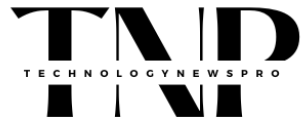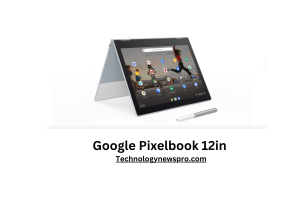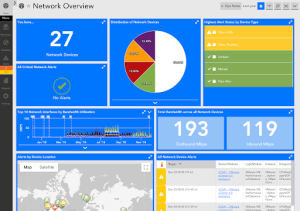Intel 33B Europe 17B Germany 12B is a high-performance, multi-core processor for the high-end desktop. It is designed to provide fast, flexible performance with a small footprint.
With an integrated graphics subsystem and a built-in Bluetooth interface, it is ideal for use in a variety of applications. Integrated Intel® HD Graphics technology provides the speed and power to deliver a wide range of visual and gaming experiences.
Bringing leading-edge technology to Europe
Bringing leading-edge technology to Europe is critical to the long-term competitiveness of the continent. Intel 33B Europe 17B Germany 12B European technology companies have faced several challenges in the past.
These include a lack of capital, multiple payment methods, and regulatory burdens. However, now European tech firms are taking advantage of the structural benefits specific to the continent.
- Semiconductor manufacturing
- Strategic goal to double
- Leading-edge semiconductor technology
- Cloud-based network storage solution for the public sector
- Leading semiconductor manufacturing firms such as Intel and TSMC are investing billions of dollars in Europe to strengthen the chip ecosystem. In addition, they plan to establish new R&D hubs and foundry services in France, Spain, Ireland, and Italy. Combined, these investments will create a next-generation European chip ecosystem.
- The EU has set a strategic goal to double its share of semiconductor manufacturing by 2030. But to achieve this, governments must act to encourage manufacturing within the European Union. To do this, the chip shortage must be addressed intel 33B Europe 17B Germany 12B. It is estimated that the ongoing supply crisis will cost the EU 11 billion euros by 2021.
- To address this crisis, Europe must make urgent steps to strengthen its leading-edge semiconductor technology. As a global hub for chipmaking, Europe has the necessary financial muscle and technological capacity. Designed for workloads that need ultra-low latency at the edge, the platform is based on a highly connected global fiber network. For customers, the high-powered computing infrastructure can be procured within an hour.
- Aside from providing an advanced platform, Lumen also offers a secure cloud-based network storage solution for public sector organizations. Customers can also use the Gateway Platform to deploy on-premises applications.
Lumen has expanded its Edge Computing Services into Europe by adding additional cooling and power at key edge data center locations. In addition, the company turned on its 100G MPLS network to allow European customers to deploy their workloads at the cloud edge.
Accelerating leading-edge chip design capabilities
Intel is accelerating its leading-edge chip design capabilities by investing nearly EUR80 billion in the European Union over the next decade. This investment will create jobs for thousands of Europeans and strengthen the company’s global partnerships.
The European Union wants to double the value of the EU semiconductor market by 2030. To support this effort, the EU has launched the EU Chips Act. It also launched a “Chips for Europe” project to provide funding for pilot lines and strategic infrastructure.
- Part of the investment
As part of the investment, Intel will expand its manufacturing capacity across the EU. In the first half of 2023, it plans to break ground on a new chip fab in Magdeburg, Germany.
The site will consist of two units, and it will produce cutting-edge chips for Intel’s Foundry Services customers.
The investment will also extend into Poland, Ireland, Spain, and Italy. These regions will benefit from an array of new fabs and foundry services. Combined with Intel’s existing manufacturing facilities in France, Poland, and Ireland, these new sites will produce an additional 7,000 jobs.
- Investment plan
The investment plan is part of a wider strategy by Intel to create a world-class chip ecosystem in the EU. Over the past two years, Intel has invested over 10 billion euros in the European Union and has plans to invest even more in the future.
Throughout the investment, Intel will also address technical challenges facing the chip industry.
For example, Intel has entered into joint research projects with universities and research institutes from around the U.S. and has begun engraving 1.4-nanometer silicon wafers at its IMEC Research Institute in Leuven, Belgium.
- New facility
Another new facility is being built in Gdansk, Poland, where it is increasing its lab space by 50%. This expansion will focus on deep neural networks, graphics, and audio. Eventually, this location will serve as Intel’s main European foundry design center.
The Intel investment is a major boon for policymakers in Europe, who have long sought to rebalance the worldwide semiconductor supply chain.
By strengthening the capacity of European companies, and creating a European semiconductor value chain, Intel’s investments will help to bring European chip manufacturing closer to the design stage, and ultimately to the consumer.
Boosting the European material and equipment supplier industry
The European material and equipment supplier industry has been in dire straits for some time. A recent BCG study estimates that Europe has a deficit of more than a quarter of a trillion euros. One possible solution is a multi-sourcing strategy.
By enabling more manufacturers to source from a broader range of suppliers, the industry will be better placed to serve a robust customer base. This is good news for consumers. Despite the recession, demand for goods is strong.
1. The complete supply chain of companies
However, Europe lacks a complete supply chain of companies capable of delivering on the high-tech and low-tech needs of the industrial world.
- Its manufacturing capacity has shrunk from 25 percent at the start of the 21st century to less than 10 percent. Fortunately, Europe has strong fundamental research and a well-developed research and development infrastructure.
- That’s good news for the likes of Intel. In the last two years, the chip giant has sunk more than 10 billion euros into European suppliers.
- To boost the industry, the European Raw Materials Alliance (ERMA) is stepping up its game.
- ERMA is an independent forum for the discussion and aggregation of information related to the raw materials sector.
ERMA is open to both established and aspiring players. ERMA’s mission is to facilitate investment in the raw materials value chain.
2. The European Rare Earth Elements Action Plan,
The ERMA has also produced the European Rare Earth Elements Action Plan, which lays out a multi-year roadmap for the continent’s rare earth elements industry.
- Initially focused on increasing EU resilience in the rare earth magnets value chain, ERMA plans to expand its focus to meet other strategic raw materials needs in the future.
- With the requisite capital and skilled labor, East Asia’s competitive edge in the supply chain industry should not be underestimated.
- Known for its advanced manufacturing technologies, Asia boasts a highly qualified workforce.
- For example, Finland and Sweden produce world-class REE deposits. As such, these countries have been attracting a lot of attention from multinationals looking to increase their presence in Europe.
The most important part of the European Raw Materials Alliance’s mission is to help ensure the European industrial sector remains a viable competitor in the global market. ERMA is a one-stop shop for identifying and prioritizing the best opportunities.
Bringing its most advanced technology to Europe in Intel 33B Europe 17B Germany 12B
Intel has announced an investment package that will boost chipmaking capacity in Europe. Over the next decade, the company plans to invest over EUR80 billion, covering manufacturing, research and design, packaging, and manufacturing services. This investment will create an ecosystem of technology for Europe.
One of the most important investments will be the creation of a semiconductor mega-site in Magdeburg, Germany.
- The site will include two state-of-the-art Intel fabs. It is expected that the site will be operational by 2027, creating 3,000 high-tech jobs and tens of thousands of jobs in the supply chain.
- Other Intel investments will focus on building new research and development facilities in France and Ireland. Those sites will allow the company to explore advanced solutions in software programming models, security, memory, and HPC.
- Another major step will involve expanding lab space in Poland. The site will include a new R&D hub and a supercomputing center. These will be used to develop deep neural solutions in audio and graphics. By 2023, the site will have 50 percent more lab space.
- Intel will also upgrade its existing chip factory in Ireland. Initially, the company will spend EUR12 billion on the fab expansion.
- However, the total investment package could reach EUR80 billion over the next ten years.
According to Intel, the company’s investment plan will boost the materials industry and attract thousands of engineers, technicians, and innovators. It will also improve the European supply chain by establishing a more balanced chip supply chain.
Global manufacturing capacity Intel 33B Europe 17B Germany 12B
These investments are a huge step for Intel. They will increase the company’s global manufacturing capacity. Their output will provide the company with the technology to meet its own needs, as well as those of its European and global customers.
- As a part of its plan, Intel will invest in European R&D and foundry services.
- It has long-standing relationships with Fraunhofnhofnhofnhofer Institute, CEA-Leti, and Technical University Delft.
- the company is collaborating with the Barcelona Supercomputing Center.
- While the European Union is striving to cut its reliance on Asian markets, the EU will increase its own chip production.
- By 2030, the European Union is aiming to produce 20% of the world’s chip supply.
- In this regard, the EU is working with private companies to make chip manufacturing more accessible
Conclusion
Intel 33B Europe 17B Germany 12B is a high-performance, multi-core processor for the high-end desktop. European technology companies have faced several challenges in the past.
The European Union wants to double the value of the EU semiconductor market by 2030. It also launched a “Chips for Europe” project to provide funding for pilot lines and strategic infrastructure.
As part of the investment,l intel 33B Europe 17B Germany 12B will expand its manufacturing capacity across the EU. The investment will also extend into Poland, Ireland, Spain, and Italy.






